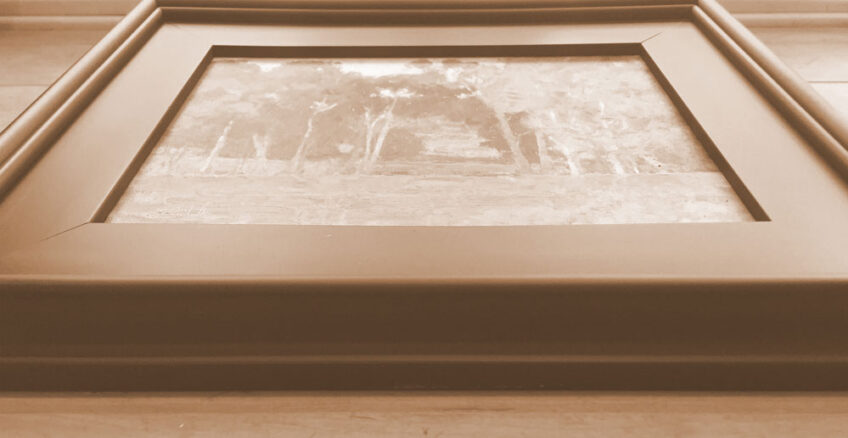Do you ever wonder as an artist whether you’re the best judge of your own work? I’ve had several discussions lately with other artists about this topic and it’s been quite interesting to think about.
Perhaps you can relate to the following. You begin a painting and the canvas more or less paints itself — everything comes together with ease and you feel great about the piece from start to finish. Your colors are radiant and you’ve caught that fleeting effect of light effortlessly. With a confident grin and a bounce in your step you put the painting aside to dry, certain that it’s a winner. However, a few days pass and you take a fresh look at the piece and realize that it’s actually lacking in a few (or several) areas. The value structure isn’t as sound as you thought, color temperatures don’t relate properly, the design is flawed, etc.
Or maybe this sounds familiar. You start a new canvas and from the first stroke of your brush it’s a struggle. You thought you had a good plan for your design but you have to redraw it numerous times until you’re satisfied to move on. You battle through the value comparisons, can’t see the colors properly and ultimately have to scrape and repaint areas with mediocre results. Finally you concede that you can’t do much else so you clean your palette in exhaustion and abandon the painting to the dusty piles of canvases in the corner of your studio. Weeks later you rediscover the painting and set it up for another look. “Hey, it’s actually not too bad,” you say to yourself. “I’m not sure how, but I think it came out pretty well!”
My point is that an artist’s judgment of any particular piece can be easily swayed by the experience he or she had while making it. Our feelings can make it very difficult to be truly objective. So how can we increase our ability to be objective about our work? Try these ideas:
1. Let some time pass after finishing a piece before you try to determine its overall quality.
2. Ask a friend or two to give your their thoughts about the piece. (Someone whose artistic opinion you respect.)
3. Use the mirror trick. Looking at the reflection of your painting in a mirror gives you a fresh view of it.
4. Look at the piece in a couple of different frame options.
Do any of you have other ideas on how we can improve our objectivity? Leave a comment and let us know!

4 Responses
Ian
Hi Dan,
Sometimes I will hang a piece where it will [or won’t!] catch my eye. If it does, is it just a little disturbing such that I NEED to look at it, or do my eyes ‘pass over’ it? This tells me I’ve captured that elusive undercurrent of attraction that makes a painting worth keeping.
Dan Schultz
Well put, Ian. Thanks for the comment.
Mark Day
Thanks Dan….those are good thoughts and ‘shared’ experiences. Still an Art mystery to me how something can feel like a Masterpiece while painting, only to discover it’s many flaws later on…..and visa versa.
I employ and enjoy the ‘setting aside’ method…..a nice surprise sometimes results.
Dan Schultz
Thanks, Mark — glad you have had similar experiences. I think it can sometimes be difficult to allow for the “setting aside time” — wanting to know right away the merit of the piece. But it still seems like a good system.